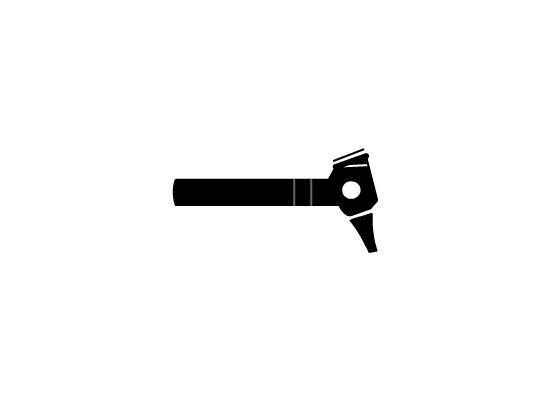1. Name of the location of 90% of epistaxis
2. A genetic disorder that forms AV malformations in the skin, lungs, brain etc
3. Name of posterior vascular plexus in the nasal cavity causing posterior epistaxis
4. 1st line treatment for all epistaxis
5. The common brand name for anterior nasal packing
6. Chemical used in cautery sticks
7. Physically scaring complication of posterior nasal packing with foleys catheter
Coming soon..
Inner Ear Anatomy
Remit
This page gives you the fundamentals of anatomy. It is important for you to know this before you try to understand vestibular physiology.
Anatomy
The inner ear is a complex, three-dimensional shape with semicircular canals, dilations called the utricle and saccule, and a spiral portion known as the cochlea (collectively called the membranous labyrinth). All of these organs are housed inside a bony shell known as the bony labyrinth and this is within the temporal bone. The cochlea is the site where sound is transformed into neural energy for hearing. The rest is concerned with balance.

The Right Membranous Labyrinth
The diagram above shows the right-sided membranous labyrinth viewed from laterally. It is this that contains the neuroepithelia that detect motion and sound. Surrounding the membranous labyrinth is the bony labyrinth and the two are separated by a fluid filled space. The fluid is called perilymph.
Despite the complexity of their shapes, the bony and membranous labyrinths can be simplified as in the following diagram.

A cross section through a semicircular canal showing the membranous labyrinth and bony labyrinth. The membranous labyrinth contains endolymph and all of the neuroepithelia required for hearing and balance. Surrounding this is a fluid filled space. This space separates the membranous labyrinth from the bony labyrinth. The space between the two labyrinths is filled with perilymph and can be considered to act in the same way as CSF - as a cushion for the delicate structures it protects.
The endolymph is produced by 'Dark cells' within the membranous labyrinth. They are dark because they are packed with mitochondria. The endolymphatic sac is thought to assist in regulating the volume and composition of the endolymph, although how this is done is not yet completely clear.
If the volume, composition or specific gravity of the endolymph is changed, for example as in Ménière's Syndrome or alcohol consumption, the function of the balance and hearing neuroepithelia within it are affected. Both Ménière's and alcohol intoxication are explained in other tutorials.
The Membranous Labyrinth
The inner ear is supplied by the Superior Vestibular Nerve, the Inferior Vestibular Nerve and the Cochlear Nerve. All of these nerves travel from the inner ear towards the brain stem within the Internal Acoustic Meatus (IAM). Along with these in the IAM is the Facial Nerve and the vascular supply.
The Membranous Labyrinth - Nerve supply
The cochlea is supplied by the cochlear nerve.
The utricle, some of the saccule, the lateral semicircular canal and the superior semicircular canal are all supplied by the superior vestibular nerve.
The posterior canal is supplied via the inferior vestibular nerve. This nerve also supplies part of the saccule.

The Membranous Labyrinth - Blood supply
The diagram below outlines the blood supply for the inner ear. The anterior vestibular artery, which is usually a branch of the basilar artery, supplies the utricle, superior canal and the lateral canal. The posterior vestibular artery supplies the posterior canal.

The blood supply comes from the anterior inferior cerebellar artery, usually. Regardless of its source, it is an end artery system. This means that, if the blood supply is blocked, such as by an embolus, the parts of the inner ear supplied by the artery will become ischaemic and non-functional because there is no alternative source of blood supply.
The diagram below shows two situations where the blood supply is interrupted. In the first case the symptoms are of cochlear and vestibular disease - sensory deafness and vertigo. In the second, only the supply to some of the vestibular part is interrupted. This patient will not have sensory deafness but will experience vertigo.


Knowing this is important because, when a patient presents with sudden sensory deafness, vertigo, or both, we should consider a vascular cause a possibility. Apart from managing the acute symptoms and trying to reverse them, we should counsel the patient about vascular risk factors such as obesity, smoking, raised blood pressure, and hyperlipidaemia. There is some evidence to suggest that patients with sudden sensory deafness, for example, are at a higher risk of stroke, so managing these risks is important.
Internal Acoustic Meatus (IAM)
The IAM is the bony conduit in the petrous part of the temporal bone through which the vestibular, cochlear and facial nerves leave the posterior fossa. Note that there are two vestibular nerves on each side, a larger superior and a smaller inferior nerve. The diagram shows the right IAM seen from the brain stem i.e. looking outwards towards the inner ear.

The Right Internal Acoustic Meatus
In the diagram above imagine standing at the brainstem and looking outwards towards the Right ear.
S= superior, I= inferior, A= anterior, P= posterior.
VII is the Facial Nerve, C is the Cochlear Nerve,
SV is the Superior Vestibular Nerve, and IV is the Inferior Vestibular Nerve.
The vertical line represents Bill's Bar while the horizontal line is the Crista Falciformis. The Nervus Intermedius travels with the Facial Nerve and is not shown.

